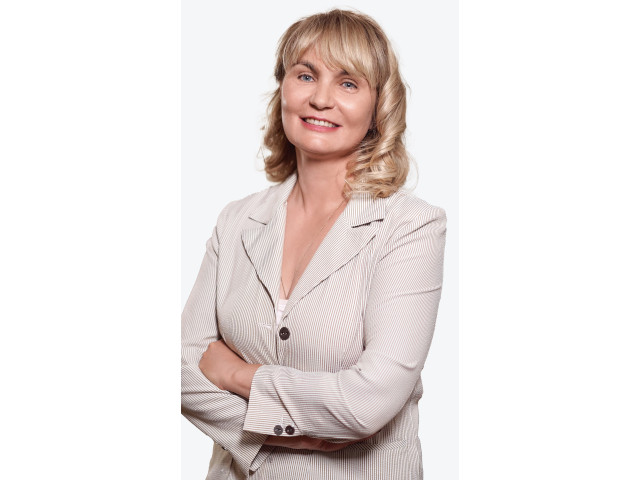Software enabling the world
By Industry Contributor 29 March 2023 | Categories: news
By Natalya Makarochkina - Senior Vice President, Secure Power Division, International Operations at Schneider Electric
It has been argued that software is consuming the world, however in recent times this could be modified to software is “enabling” the world.
As enterprise architectures move increasingly to software-controlled models, these controls are allowing new levels of resilience and agility to respond to and cope with the evolving geopolitical situation, climate influenced disruption, and everchanging market trends, all the while ensuring security and sustainability.
Unparalleled global disruption The recent upheavals being seen around the world have shown that supply chains are vulnerable and subject to influences that are hard to predict. Beyond the geopolitical situation, black swan events such as the Suez Canal blockage are being compounded by climate related disruption, from the Californian wildfires, European floods, and Australian droughts to the recent heatwaves and record temperatures on several continents.
At short notice, organisations often have to adapt to new realities, whether through sanctions, fluctuating energy prices, or access disruption. Shortages and delays in supply have notably hit construction, the automotive industry and even food supplies.
Model, plan, pivot In order to cope with these scenarios, enterprises need to be resilient and agile, with greater oversight and insight to be able to model, plan, and pivot.
This means having software systems that link every aspect of the operation, making them visible, measurable, and manageable.
It will be no longer be sufficient to be able to simply report on enterprise-wide operations. In order to compete and survive, the enterprise will need to be able to model and predict how necessary changes will affect output, profitability, and sustainability goals.
20-30-50 To achieve this new level of visibility and control, new architectures are emerging.
There is now an expectation for future enterprise architectures to comprise a mix of 20% core data centres, 30% public cloud and 50% edge deployments within the next three years.
This will bring with it new levels of sensors (IIoT), monitoring, visibility, management and analysis. Cloud-based systems will oversee these new architectures, encompassing evermore elements, from manufacturing lines, retail floors, and healthcare bedsides, to edge deployments, regional data facilities and central data centres.
The foundation of this approach will be not just visibility of data, but orchestration of the data infrastructure, with the emerging capabilities of DCIM3.0.
Preventative measures A major part of this new, software-enabled world is the deep integration of artificial intelligence (AI) and machine learning (ML).
Resilience is achieved through reliability and predictability. Predictive analytics, through the deep application of these technologies can allow for highly effective preventative maintenance regimes that can either detect or prevent failures before they can impact on operations.
Adaptation with insight An example of how this is playing out is in the food industry, where market garden producers are reducing their greenhouse temperatures as a direct result of rising energy costs.
With a full sensor deck, from pot to shelf, growers can model the temperature change, predict yields and crop changes, and understand where cost optimization needs to be adopted to cope with the scenario. By being able to process the data close to where it is produced, before central modelling crunches the numbers, growers can adapt labour, transportation, and distribution requirements, based on accurate data and informed analytics. Other examples include healthcare where bedside inputs form clinicians can be analysed in edge deployments for real-time analysis.
These approaches to data gathering and initial analysis are only possible through the seamless integration of edge capabilities with central data resources, through data infrastructure management, from DCIM to data lakes and AI-driven analytics.
In connecting all the connection points between the user and applications, we must be aware of security and the risk involved.
This is why we have developed strong partnerships to understand the risks and ensure our applications and services can maintain resilience, security, and sustainability for tomorrow’s IT systems, even as they encompass an increasingly sprawling hybrid IT environment.
Standardized and science-based metrics These major themes of resilience and security must be joined by that other critical requirement: sustainability.
A major benefit of this new software-enabled world is the ability to apply standardized metrics across the board to measure and manage emissions and environmental impact. Science-based emissions targets are becoming more widely adopted, and can help organisations understand and reduce emissions, even amid the current trends.
Enabling the world Despite the pace of technological change, software systems and controls, building on developments in IIoT, AI and ML, and cloud and edge computing, are enabling enterprises to have greater visibility, insight, and oversight of operations.
This is providing a level of resilience previously not possible to cope with the maelstrom of influences in today’s world.
Enabling greater management of cyber risk, as well as providing a basis for sustainability commitments and goals, software has gone from eating the world to enabling it.
Most Read Articles

Have Your Say
What new tech or developments are you most anticipating this year?



